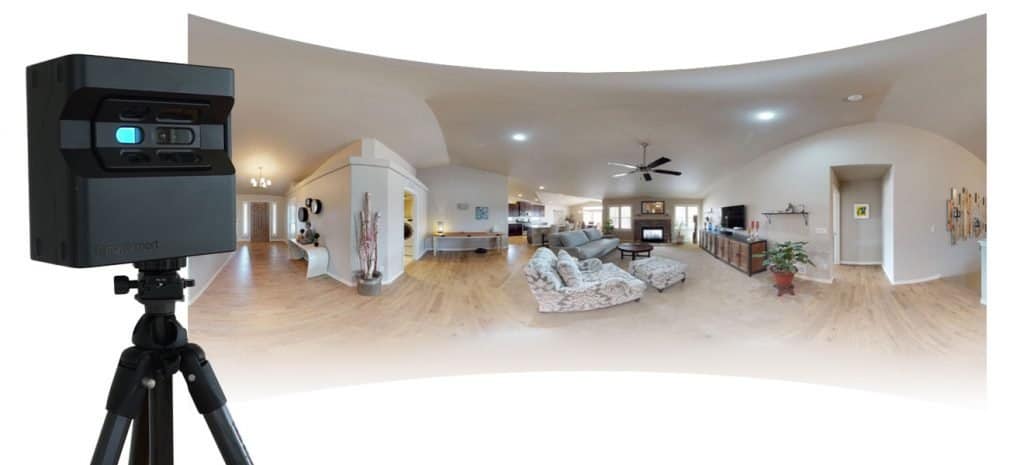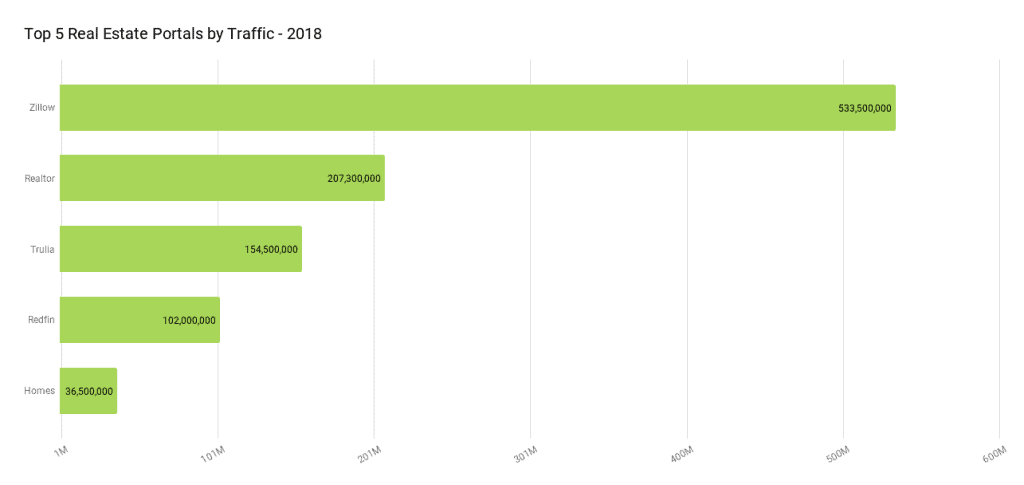
An “IDX Broker” is a real estate professional that participates in the worlds largest real estate marketing network. “Broker Reciprocity” is the key to making this network successful.
In all fairness, it’s also the name of a service that distributes listing data to Brokers and real estate portals.
To understand how this complex network operates, we need to look back to the days when real estate print advertising was King!
Before the internet, real estate agents used print advertising to market their listings. This involved putting together ads for print media like newspapers and home magazines.
Print ads were expensive and putting them together took a lot of time. This resulted in agents making choices about which publications were most effective.
Another challenge of print advertising was the home sellers themselves. Home sellers expect aggressive marketing, the wider the reach the better. Home Sellers expected Agents to advertise in as many different publications as possible.
Print advertising was also frustrating because of the time it took to go from printing to the shelf. In most cases, it took weeks to get the magazines into the reader’s hands. This often meant the homes were under contract and were no longer for sale.
The Internet Created the IDX Broker

The internet has changed the entire real estate advertising landscape. Agents can now advertise their listings to tens of thousands of websites globally.
The amazing thing is that this all takes place in minutes or hours, not days and weeks. The reliability of the data improved as well.
This dissemination happens because of a complex system of syndication and distribution channels.
The system was set up by the Real Estate industry itself. Local MLS’s and The “National Association of REALTORS®” established this system.
There are two types of end users that use this data. First, there are the large real estate portals like Realtor.com & Zillow. The second group consists of individual cooperation IDX or Broker Reciprocity websites.
It all starts with the MLS (Multiple Listing Service). When an agent lists a property for sale, they have the option to syndicate that listing. If they choose yes, it becomes part of the feed. This simple act has become one of the most important aspects of the Steps to Selling a House.
Syndication
Syndication is the term used to describe the listing data sent to the big real estate portals. This would be sites like realtor.com, Zillow.com, homes.com and many more.
Think about syndication as a modern version of the old print advertising model. Instead of compiling and distributing ads for print magazines, it’s done online.
The other problem this system fixed was the scope of distribution. The home seller is now happy that their home is on every real estate website. The agent no longer has to choose where to advertise the property based on budget.
What is IDX and Broker Reciprocity?
The second type of listing distribution method is IDX often referred to as Broker Reciprocity. This is, in fact, a great description of how this concept works. Reciprocity is “The practice of exchanging things with others for mutual benefit”.

IDX (internet data exchange) is a listing data feed that gets distributed only to participating brokers. This arrangement allows participants to display other Brokers listings on own website.
There are strict rules about how the data must appear. But IDX allows Brokers and Agents to provide rich listing data to their clients.
One of the rules of IDX and Broker Reciprocity is that participants cannot opt out of which Broker sites their listings appear on. This rule ensures a level playing field for participants. Additionally, this provides the broadest advertising reach for all listings.
IDX allows the smaller real estate companies to provide the same listing data as the big portals. These smaller websites can’t go toe to toe with the massive portals like Zillow and Realtor. But having the same listing data gives them an opportunity to compete in different ways.
Agents have the advantage of being local and having local knowledge. Smart agents use local neighborhood information around the IDX data.
These agents provide connections between the IDX data and life in these neighborhoods. This is something the big portals can’t do…yet!
Here are some examples of Broker Reciprocity in action. These sites are from IDX Brokers around the nation:
- Here is our Springs Homes Colorado Springs Homes For Sale search. We place the search right on the front page since we know this is what most home buyers are looking for when they visit our site.
- Georgia REALTOR® Anita Clark works in Warner Robins GA. Close to Robins AFB. Here is her IDX page for Single Family Homes For Sale in Warner Robins GA
- Paul Sian is a REALTOR® that specializes in Cincinnati and Northern Kentucky Real Estate. Paul also places his home search tool right on the front page of his website.
- Phoenix Real Estate Agent John Cunninghan also place his Phoenix Homes for Sale right where home buyers want to see it, front and center.
- REALTOR® Kevin Vitali specializes in Essex and Northern Middlesex Counties, Massachusetts Real Estate. Kevin implements an excellent example of a map-based search on his site.
- Metrowest Massachusetts REALTOR® Bill Gassett takes a different approach. Bill breaks his search areas into Counties and Cities. This relates to his service area Metrowest Massachusetts Real Estate.
- Sharon Paxson is a REALTOR® with Compass in Newport Beach California. Her website features an excellent map-based interface for users to search for Newport Beach Homes for Sale
Real Estate Portals
The biggest of the real estate websites are often called portals. These sites are a rich source of real estate information. This includes sites like Realtor.com, Zillow.com, and Trulia.com.
Information on available Homes For Sale is the primary attraction of these sites. Like the IDX Brokers, Real Estate portals receive their data from local MLS syndication feeds as well. The Portals also have strict rules about how they can use this data.
The portals are commercial websites, they make money in many different ways. Some sell advertising, while many make money by selling leads to Real Estate agents. To get these leads, the consumer has to see these portals as authoritative and trustworthy. This means the data on these sites must be accurate. But accuracy is difficult to achieve in a fluid market, like residential real estate.
Evolution of The Data Feed
In the early days of syndication, the data on the portals was unreliable. Consumers complained that homes on these sites were often under contract or sold.
The problem with real estate data is that listings come and go on a daily and sometimes hourly basis. The original listing data feed came in full datasets. This required the sites to rebuild their databases daily to purge old data and stay current. These rebuilds took a long time and in the process, the status of a property could change.
A home, the potential buyer saw on a portal as available, could be under contract or off the market. The listing agent always needed to confirm the true status of the property for the consumer. Contacting the agent was usually what the consumer was trying to avoid in the first place.
Birth of RETS (Real Estate Transaction Standard)
The real estate industry understood this needed to improve. So, in 1999 The National Association of REALTORS® launched RETS. RETS is a data framework used by the real estate industry to help with the exchange of real estate data.
RETS was a more dynamic platform designed for real estate data. It allowed for faster synchronization not a complete replacement of the listing data. This allowed both Brokers and Portals to refresh data throughout the day.
Full implementation of RETS was slow and this had a lot to do with the MLS systems themselves. MLS’s contract with big data systems providers. Much of what the MLS can do depends on their vendor’s capabilities. These vendors were slow to follow the RETS standards which affected the MLS systems as well.
NAR finally required the MLS’s make RETS available by the end of 2009. It wasn’t until 2011 that we saw industry-wide adherence to RETS.
RETS was a significant improvement over the early methods of listing data syndication. But, with any good technology comes revisions and improvements and that’s what’s next.
The Sunsets on RETS
In 2018, Real Estate Standards Organization (RESO) announced it plans to retire RETS. RESO Web API will be the new standard moving forward. According to RESO, “Web API” will move the real estate industry deeper into mobile and social applications.
The Web API will make its data calls in real time, this will make the listing data more accurate and reliable.
Mobile has become an essential tool for home buyers, it makes sense to focus efforts on this platform.
Syndication and Your Home
How does all this affect the homeowner? Well, in a very good way, especially if you can stand out.
In the days of print, the widest coverage went to the agent that spent the most on advertising. Syndication allows the listing agent to advertise on thousands of sites. Remember we are talking about the portals and IDX or Broker Reciprocity sites as well.
With so much listing data available to homebuyers, your home must stand out. This means, professional photos, video or virtual tour. It also helps to have the home staged before photos.

Make Sure You Get Syndicated
Syndication is the new standard in the real estate industry for marketing listings. The process of getting your listing into syndication is actually quite easy. But, there are agents that don’t take part in this remarkable system.
Lack of participation is usually due to confusion about how the system works or how to get connected. If you are selling your house, make sure your realtor’s marketing includes syndication.
Getting involved is actually easy. Most MLS’s offer syndication as an option at the time and agent inputs a listing. In most cases, it’s as simple as checking a box. This method gets the listing into the system at a minimal presence.
The various portals have options and upgrades to enhance the status on their site. This requires contracting with each portal and of course paying more money. In some cases, this is a valuable upgrade. But, serious buyers are going to search out the best listings on each portal. Great photographs, video, and virtual tours seem to matter more than enhanced status.
The Benefit of IDX and Broker Reciprocity
There are close to 100 portals, and many of these portals have extended networks with 100’s of subsites. Keeping track of where to send your listing data can be daunting.
There are portals that specialize in unique property types. Catering to niche property types like farm and ranch, waterfront, income and more.
We have found that for us, the best way to stay on top of listing syndication is to use a tool like Listhub. Listhub is a syndication tool for the most popular real estate portals in the world.
The listing agent chooses the portals they want to receive their listing data. Turning on or off the feed based on whatever criteria are important to that particular agent.
Keeping track of what property goes where can be overwhelming. Trying to keep track of usernames, passwords, image sizes and more is a big job. Listhub is a tool we use that handles this for us.
Developed by “The Threewide Corporation”, Listhub launched in 2006. This was during the developmental stage of the RETS standard.
Move, Inc, the owners of Realtor.com acquired Listhub in 2010. This made Listhub the syndication tool for one of the largest real estate portals in the world. This is a company that understands syndication.
Some MLSs Step Away From Syndication
There is a growing trend among MLS organizations to end syndication feeds. They say this decision is about giving Brokers the freedom to choose where their listings go.
As I mentioned earlier, the choice to syndicate a listing is as simple as checking a box. So opting out of syndication is a simple task for a Broker, un-check box. So, the choice argument seems weak.
If the purpose is to target only certain portals of the Brokers choosing, ListHub does a great job at that. So, eliminating that option makes no sense either. In truth, there are a host of opinions and reasons about this move away from MLS syndication.
The popular opinion is that big brokerages are squeezing the smaller companies.
Zillow is the biggest portal and they allow direct listing data feeds from big companies. These XML data feeds are expensive to set up and the company needs a lot of listings to qualify.
Smaller brokerages can’t afford the setup and rarely have enough listings to qualify. Since most home sellers demand their listing appear on Zillow, this puts the small company in a jam.
Eliminating the MLS syndication option appears to create an advantage for bigger companies.
If you’re asking yourself how this happens, it’s pretty simple. MLS Boards have directors and these directors are often members of big companies. This is a function of size, bigger companies have more agents, thus more interest in MLS politics. The attitude towards syndication is, I get it through my company, so let’s pull the plug. This saves money and enhances the status of big companies.
This is unfortunate for smaller brokerages but not catastrophic. If MLS’s step away from portal syndication, opportunities open up for other entities. There are a growing number of paths into the real estate portals.
Ancillary service providers like Website and IDX vendors can generate the XML feed. These companies send their clients listings to the portals eliminating the issue.
This works because the vendors have a financial motivation to help their clients. Smaller brokerages can sign up for the service and syndication becomes a bonus.
Popular Real Estate Portals
This is important because home sellers want their listings on the “Good Portals”.
This brings up the question, “what makes a portal good? The answer to this question depends on who you ask. Home sellers tend to look for the widest net possible and the most visible. REALTORS® generally prefer to focus on the most effective portals in the space.
These are the portals that present the property in the best possible light and get the best results.
Of course, there are a few portals that are without a doubt required. We’re talking about the “Top 5” Zillow, Realtor.com, Trulia, Redfin and Homes.com
These five sites receive the lion’s share of traffic in the real estate space. If your home is on the market you need to have it on these fives sites.

Information provided by SimilarWeb.com.
This chart illustrates why it is important to have your for sale property on these sites. These sites are step one for home buyers in the steps to buying a house.
Inclusion here gets your home noticed and if it looks good, on the shortlist. Once a buyer puts a home on the shortlist, they tend to start more in-depth research on other sites. It’s during this research they start to reach out to REALTORS® for help.
This is the point buyers start to schedule private showings. Showings lead to offers, contracts, and closings. This process wouldn’t exist without the wide net of Broker Reciprocity and Syndication.
If you’re selling your home choose a broker that understands syndication and IDX. You should look for someone that has a good understanding of where your listing will go and how it gets there. You don’t want to hear, “Oh my office handles that”.
IDX and Broker Reciprocity constitute a powerful network for listing agents. Make sure you are using this tool effectively.

